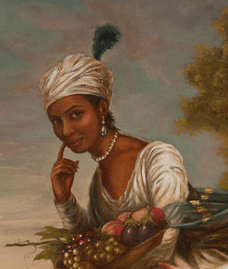Last year we reported on the upcoming film, Belle, based on the life of Dido Belle, which hits the silver screen on May 2. Dido Belle was a biracial woman![]()
In an interview with Elle Magazine, Asante openly spoke about that discovery and more, including how black people fit into European history, feminism, and why Belle is an “UnCinderella” story. Below are highlights from Asante’s interview.
ON THE LINE IN THE MOVIE WHERE BELLE SAYS, “I DON’T KNOW THAT I FIND MYSELF ANYWHERE.”
As women
ON BELLE BEING A KEY FIGURE IN BRITISH HISTORY AND WHETHER SHE AND HER FUTURE HUSBAND (LAWYER JOHN DAVINIER) CONTINUED TO BE A FORCE IN POLITICS
Not really. They got married and had sons, but they didn’t marry until Lord Mansfield died. We can never be sure that Dido felt she couldn’t leave Kenwood, the Mansfield manor house, until he died. It was very important to leave the film on a triumphant note—Lord Mansfield’s stunning judicial blow against slavery. That’s what happened in real life, so there was a real sense of commitment, loyalty, and love on her part. That’s what brought me to the movie.
ON TACKLING THE INFAMOUS ZONG MASSACRE IN WHICH 143 SLAVES WERE RUTHLESSLY THROWN OVERBOARD FOR THE INSURANCE MONEY, IN THE FILM
My dad died the night before we shot those scenes, so that father-daughter element of the story was so important for me to get right, and so important that we understand that this wasn’t just a moment for the larger story. It was also important for the personal story, the relationship between this unexpected daughter and a kind of paternal figure that we’ve never seen on film or TV. We’ve never seen a white guy love a black child
ON INTERWEAVING RACE AND MONEY AND BELLE CHOOSING TO MARRY AN EDUCATED COMMONER, WHICH WAS UNHEARD OF AT THE TIME
In her own journey Dido has to come to terms with who she is as a woman, who she is as a biracial woman, who she is as the child of a slave she never had a chance to know and an aristocratic family who against all odds wanted her to be safe and thrive. You know, someone who is half-black and half-white is half of many things: a wealthy woman in a complex society where nobody looks like her, and most difficult, not to have her seeming to be asking for more, when actually what she’s asking for is equality.
Check out the trailer for “Belle” below. Are you excited to see this movie?
– See more at: http://madamenoire.com/414125/amma-asante/#sthash.BWGm9gxp.dpuf
Share this content:









